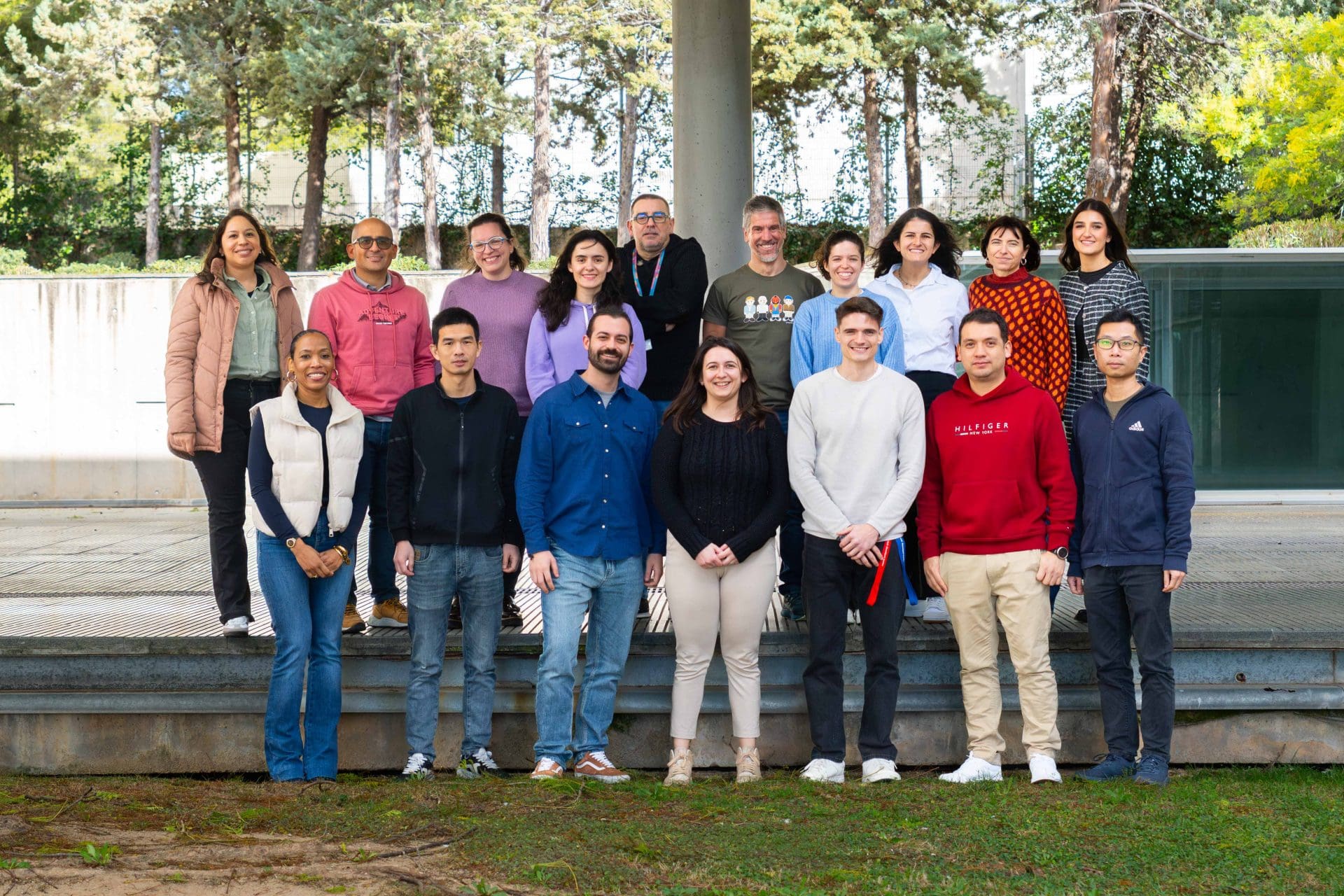- Home
- Resarch
- Research Groups
- Prof. Emilio Palomares
Prof. Emilio Palomares
Molecules and materials for energy devices.
Research Overview
Our research has been focused on the following topics during the last years:
Self-assembled molecules (SAMs) as selective contacts in optoelectronic devices
We have designed, synthesized and tested tens of molecules that can self-assemble on top of a semiconductor substrate. The SAMs are made of an anchoring group, a linker and a functional group which is in contact with the photoactive layer of the devices. The careful selection of the chemical nature of the moieties allows a fine tuning of their optical and electrical properties.
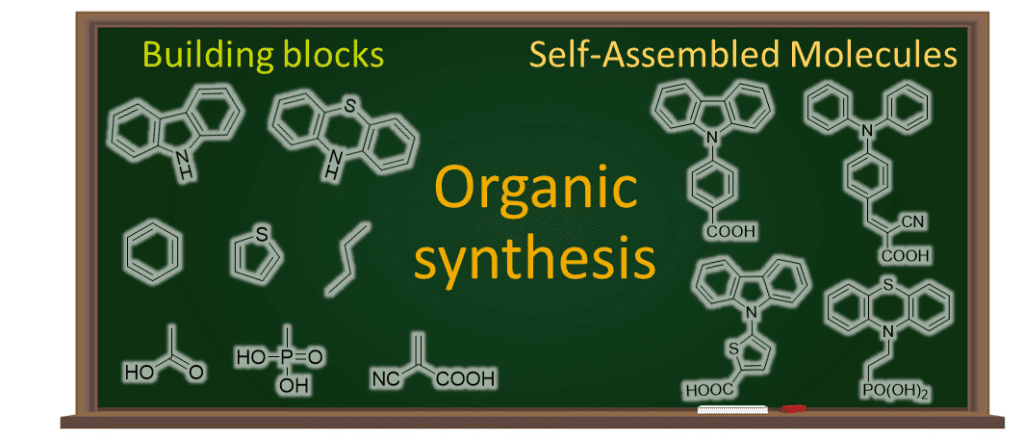
The synthesized SAMs are then applied as charge selective contacts, mostly hole selective, in perovskite-based solar cells and light emitting diodes made of nanocrystals. The molecular structure influences the growth of the photoactive layer and the charge transfer kinetics in the device, which influences efficiency.
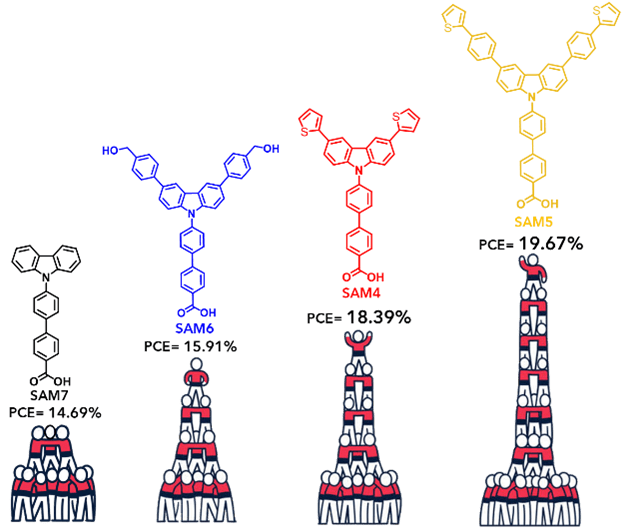
Dye Sensitised Solar Cells (DSSC): from the synthesis of the dyes to the characterization of quantum coherent effects
Novel dyes are designed to enhance the power conversion efficiency of solar cells. On the other hand, the new dyes help to understand the role of each of the charge transfer mechanisms in the final efficiency of the device. Another research line is focused on tuning the structure of the photoactive molecules to enhance quantum coherence effects between the dye and the semiconducting metal oxide.
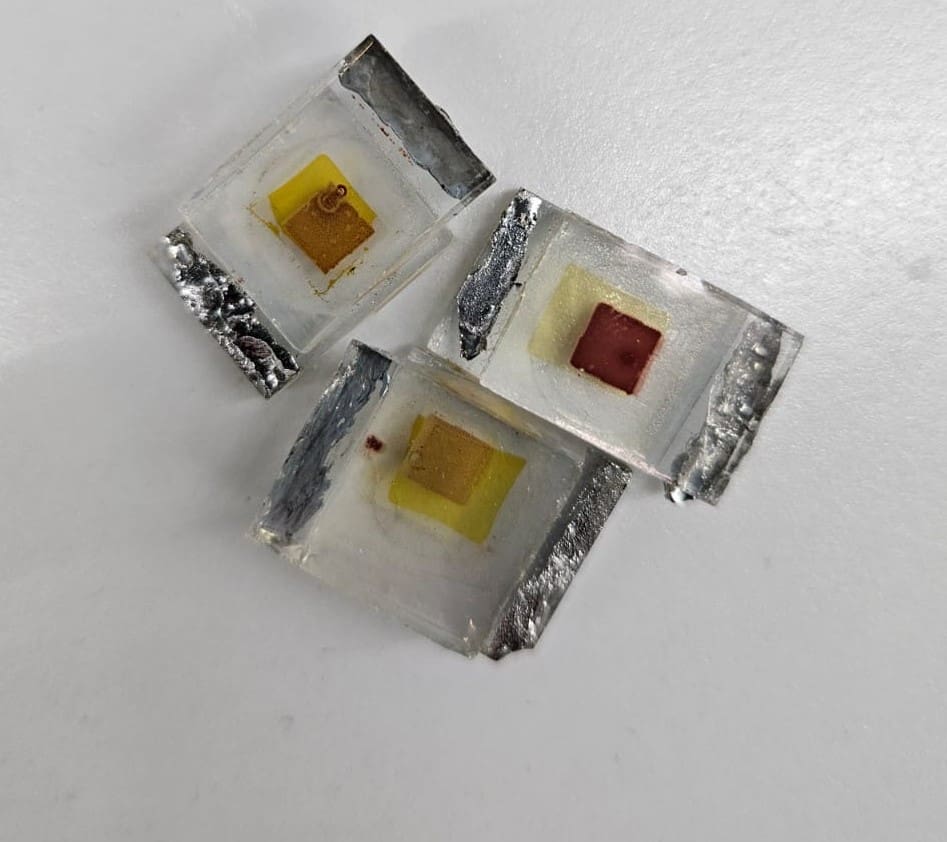
(photo) electro catalytic reduction of CO2
Research has been done on the rationale design of hybrid catalysts for the efficient electrochemical reduction reaction of CO2 into products of interest. This design is based on the combination of nanostructured metal or metal-oxide catalysts with molecular materials such as polymers to tune the local microenvironment of the electrocatalysts, promoting the CO2RR selectivity towards the formation of specific products.
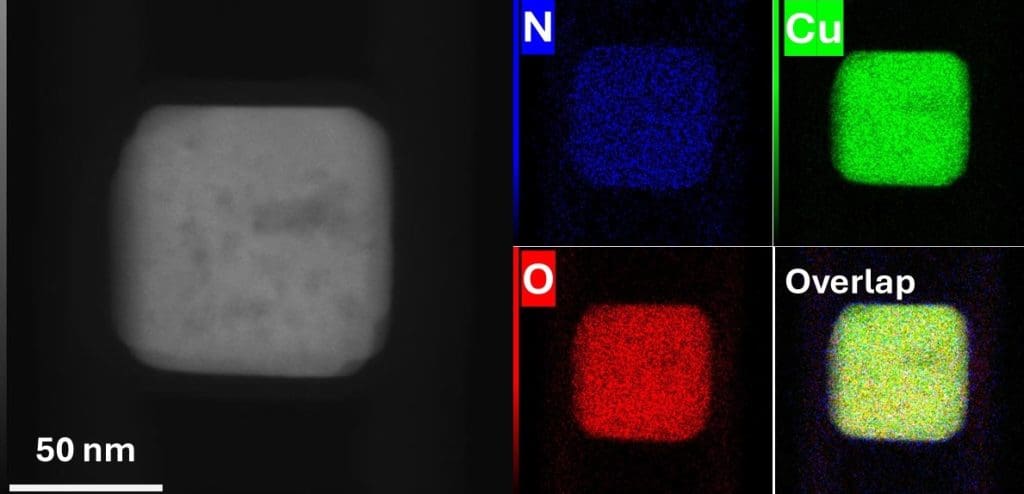
The final aim is to study the relationship between applied bias, catalysts stability and product formation for the understanding of material properties that favour the increase in solar-to-fuel conversion efficiency in CO2 electrochemical solar cells. Therefore, and on the other hand, the group is particularly interested in studying the interfacial charge transfer reactions versus device efficiency in solar cells to power electrochemical fuel cells for CO2 reduction.
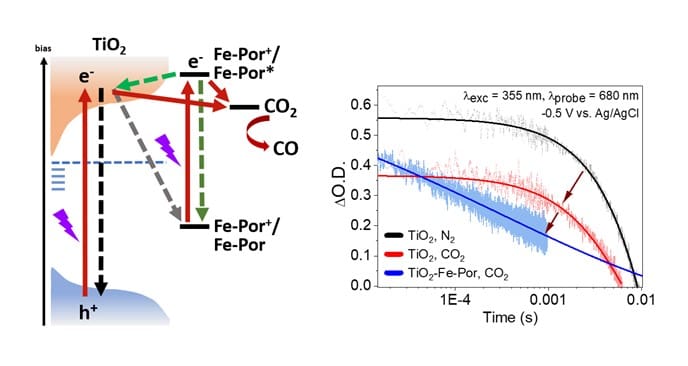
Single and multijunction organic-based solar cells
Making use of commercial or lab-made materials, the group works in organic photovoltaics (OPV) with the aim of understanding the charge transfer and recombination kinetics taking place at the interface because the achievement of higher efficiencies requires improved charge dissociation, balanced charge transport, and minimized energy losses.
The second objective is the development of multijunction solar cells to power the electrochemical reduction of CO2. The design considers the intensity and bias required by the electrocatalysts to achieve efficiently the reduction reaction.
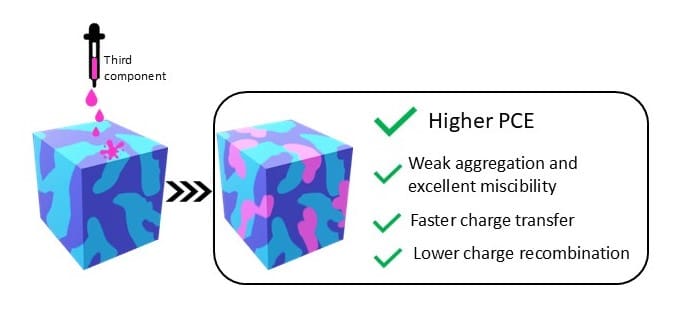
Advanced transient characterization
The group is highly interested in the studies of kinetic processes occurring at the solar cells which are responsible for the device losses and stability. Among the different techniques that can be used we will specifically focus on the use of Visible-IR L-TAS (Laser Transient Absorption Spectroscopy), PIT-PV (Photo-Induced Transient Photo Voltage), PIT-PC (Photo-Induced Transient Photo Current), PICE (Photo-Induced Charge Extraction) and PIDC (Photo-Induced Differential Charging). Moreover, to analyse the radiative recombination kinetics in complete devices we also take advantage of the picosecond-nanosecond TCSPC (Time Correlated Single Photon Counting), femtosecond fluorescence spectroscopy and steady state fluorescence.
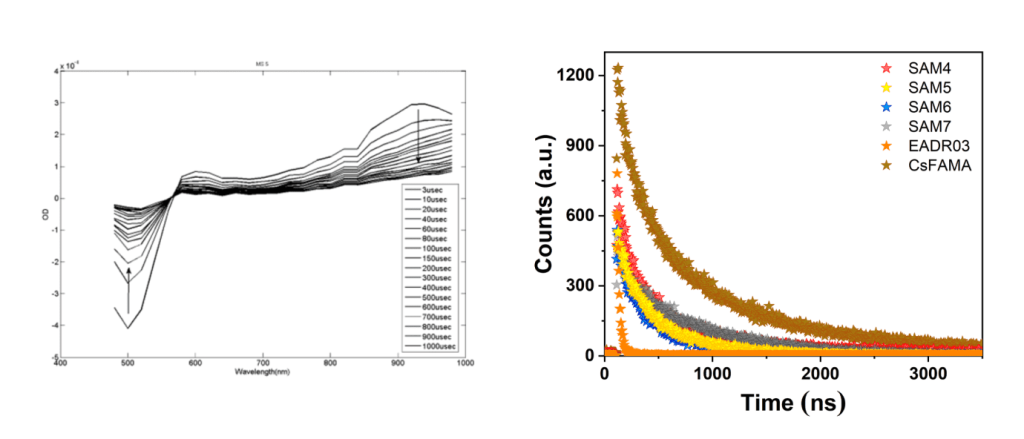

Let's create a brighter future
Join our team to work with renowned researchers, tackle groundbreaking
projects and contribute to meaningful scientific advancements
